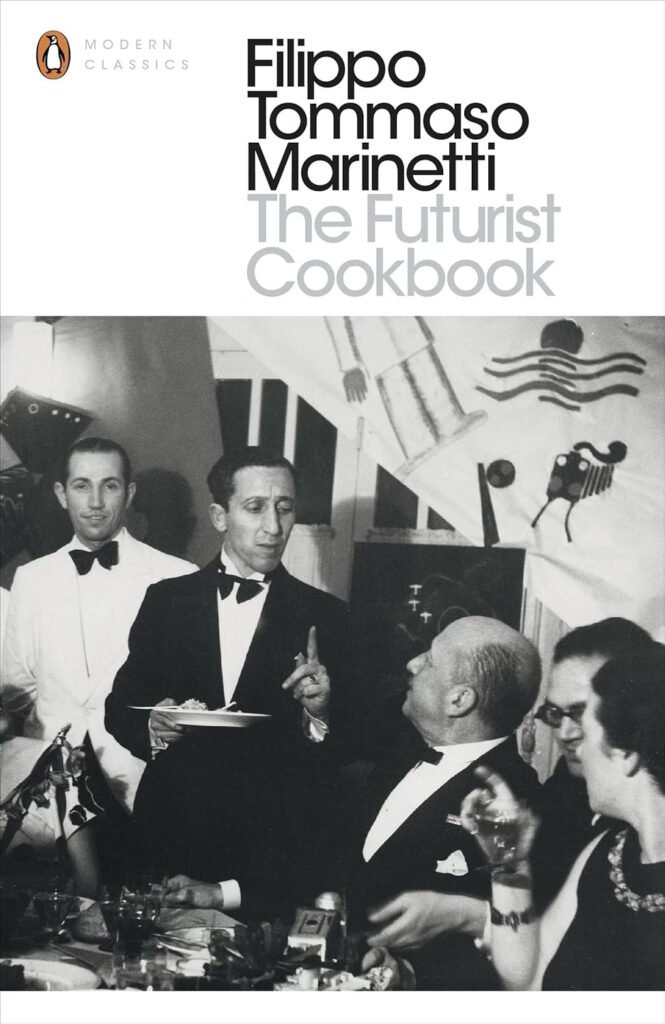
FLIPPO TOMMASSO MARINETTI
(Source: www.amazon.com.tr)
Filippo Tommaso Marinetti (1876-1944) was an Italian author, art theorist and founder of the Futurist movement. Raised in Egypt where he developed an interest in literature, he was almost expelled for publicizing Zola’s scandalous novels in school. He then studied in Paris, later graduating with a law degree in Italy; pursuing his interest in literature then on. He authored the first Futurist manifesto in 1909, and also co-authored the Fascist Manifesto in 1919.
Futurism glorified movement, dynamism, speed, technology, violence, cars, planes, nationalism- blurring the line between art and life, and was against traditions and museums. They used a multitude of mediums for expression, frequently publishing manifestos, organizing evenings. Marinetti was also a war correspondent in World War 1, as well as serving in the army. He married B. Kappa, with whom he also produced art and three children. He merged with the Fascist Party, later disagreeing on certain points and leaving, yet remained influential on the development of the party philosophy. He later volunteered for military service again at the age of 65, later dying of a heart attack.
He was a man of many contradictions, however, this does not seem unintentional on his part, or out of line with his discourse. A capricorn.

(Source: www.en.wikipedia.org)
The Futurist Cookbook was originally published in Italian in 1932.
In 1930, Futurists were invited for a fancy meal which spurred Marinetti’s reaction- ‘Futurist cooking will be free of the old obsession with volume and weight and will have as one of its principles the abolition of pastasciutta’.
He deems it a passifying food, weak in nutritients, causing bloating, slowness, melancholy and pessimism. He proposes nutritious food in smaller amounts for a dynamic, agile generation of Italians, better fit for war and more harmonius with the contemporary life. Self-nourishment this way, with attention to detail in its presentation, is also to lift the spirits and promote creativity. All senses are to be engaged while eating.
He forsees pills and powders for nourishment in the future, and until technology is able to provide that, people should eat as little and as nutritious as possible. Technology is to be utilized more in the kitchen. Although he proposes a major makeover for the Italian culinary arts, he also strongly warns against all foreign influences. All this does not stay in fantasy land, and a restaurant and its Futurist menu is designed- the Hot Palate Restaurant opens in 1931. Various banquets are held there, as well as in other countries, and there is mixed reaction.

There is a whole section in the book describing possible Futurist dinner scenarios, as well as recipes, by Marinetti and other Futurists- ‘to evoke and provoke essential states of mind which cannot otherwise be evoked or provoked’. In Lesley Chamberlain’s afterword, there is great emphasis on this book being a joke which I do not agree with. Marinetti and some if not all his fellow Futurists certainly are humorous, and I have laughed out loud in places, however, just about all the recipes and scenarios are recreatable. And Marinetti emphasizes that they should be relatively inexpensive to produce.
There is mention of camel meat and the like sporadically, and some proposed dinners are theatrical in essence, but there is no impossible included, no moon dust marinated in fairy tears. Even pasta is included in some dishes, and despite Marinetti’s radical image, this all-inclusive approach is realistic and even humanistic probably. What they have proposed has not been left as theory, but they have supported their ideas with real products. There is art, drama and optimism surrounding the work, and they have blurred the line between art and life; they have done what they have preached. And it is not difficult to see their influence on the current state of the culinary arts.
Sifting through misogyny and fascism, this book is an entertaining experiment at looking at the experience of eating (rather than cooking) considered by artists of the time.
‘This Futurist cooking of ours, tuned to high speeds like the motor of a hydroplane, will seem to some trembling traditionalists both mad and dangerous; but its ultimate aim is to create harmony between man’s palate and his life today and tomorrow.’
‘…4) ‘Flooded Forest at Twilight’: endives cooked in wine, strewn with boiled and sugared beans.
This dinner is eaten while a talented reciter of poetry makes the National Poet Farfa’s humorous lyrics resonate explosively by imitating their typical voice of a short-sighted exhaust pipe.’
‘From today our kitchen has banished pastasciutta. We have come to this decision because pasta is made of long silent archaeological worms which, like their brothers living in the dungeons of history, weigh down the stomach, make it ill, render it useless. You musn’t introduce these white worms into the body unless you want it as closed, dark and immobile as a museum.’ FILLIA
Author: Filippo Tommaso Marinetti
Translator: Suzanne Brill
Title: The Futurist Cookbook
Published: 2014, by Penguin Group
First published: 1932 (in Italian, titled La Cucina Futurista)
Pages: 253
